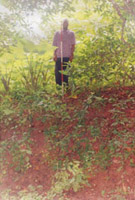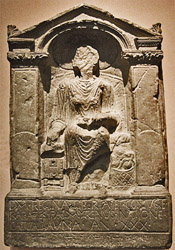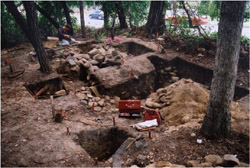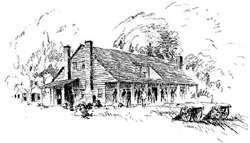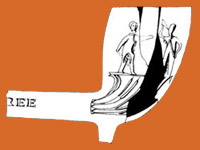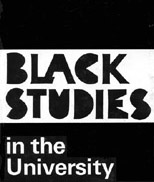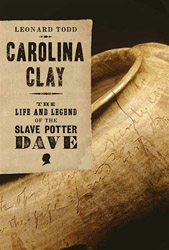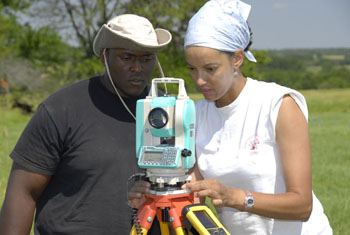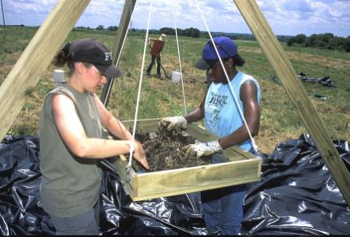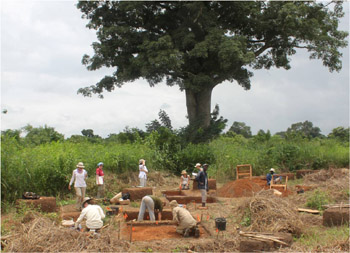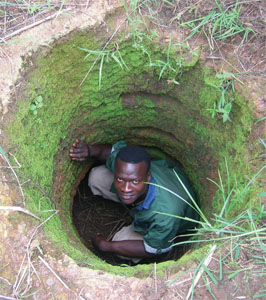  March 2010 NewsletterISSN: 1933-8651In this issue we present the following articles, news, announcements, and reviews: Bioarchaeological Analysis of Historic Kormantse, Ghana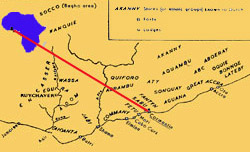 Human skeletal remains associated with 17th century artifacts were recovered during the latest excavations at Kormantse, Central Region, Ghana. As a primary population catchment and dispersal point for those passing through to the African Diaspora, the Kormantse site represents one of the nexus points where Diaspora cultural formations and bonding began. Such West African locations need to be more closely examined in our search for cultural and population connections as we reconstruct the colonial history of Africa and the African Diaspora. This article provides a preliminary bioarchaeological analysis from excavations at Kormantse, and in particular, it concerns data pertinent to demographics, dental and skeletal health, and human behavior extracted from the population sample. Further excavations at the site, and the continual study of their remains, will soon enhance our understanding of skeletal biology and mortuary patterns during the cultural establishment of historic Kormantse. [Read or download this full article here in Adobe .pdf format >>>]. [Return to table of contents]Ditches and Ramparts as Evidence of Warfare Defenses in |
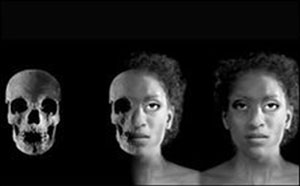 This reconstruction shows how the "Ivory Bangle Lady" may have looked. Image by University of Reading. |
Academics say the discovery goes against the common assumption that all Africans in Roman Britain were low status male slaves.
Remains of the Ivory Bangle Lady, as she has been named, were studied in Reading using forensic techniques.
She was first discovered in the Bootham area of York in August 1901.
Her remains were in a stone coffin near Sycamore Terrace in the city.
Her grave dates back to the second half of the 4th Century. She was buried with items including jet and elephant ivory bracelets, earrings, beads and a blue glass jug.
She also had a rectangular piece of bone, which is thought to have originally been mounted in a wooden box, which was carved to read, "Hail, sister, may you live in God."
The grave goods and skeletal remains of the Ivory Bangle Lady were studied by the archaeology department of the University of Reading.
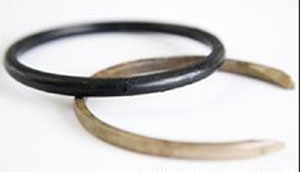 Bracelets of ivory and jet were among the woman's grave goods. Image by University of Reading. |
The university's Dr Hella Eckardt said a study of the skull's size and facial features along with analysis of the chemical signature of the food and drink she had consumed led to their conclusion that she was of high status and of African origin.
Dr Eckardt said: "Multi-cultural Britain is not just a phenomenon of more modern times.
"Analysis of the 'Ivory Bangle Lady' and others like her, contradicts common popular assumptions about the make up of Roman-British populations as well as the view that African immigrants in Roman Britain were of low status, male and likely to have been slaves."
The Ivory Bangle Lady will feature in an exhibition about the diversity of the population of Roman York at the Yorkshire Museum in August.
[Return to table of contents]Ghana Dig Reveals Ancient Society
http://news.bbc.co.uk/2/hi/africa/8518185.stm
Copyright 2010 BBC News
Archaeologists have unearthed dozens of clay figures in Ghana, shedding light on a sophisticated society which existed before the arrival of Islam.
Experts from the University of Ghana found 80 sculptures believed to be between 800 and 1,400 years old.
They believe the figures, depicting animal and human forms, are part of a burial ground or shrine.
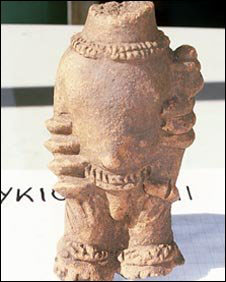 Example of recovered figure fragment. |
Archaeologists say the societies that constructed the figures simply disappeared when Islam arrived.
"What is interesting is that the people now living in this area seem to have no connection with the makers of the figurines," said the university's Benjamin Kankpeyeng.
"That would suggest that that they have more in common with peoples living in other parts of West Africa -- but we need to do more work before we can be certain."
Arab slave theoryThe statues were found amid hundreds of mounds in a densely packed 30km-square area.
Mr Kankpeyeng intends to analyse the position and arrangement of the statues with Tim Insoll from the UK's Manchester University.
Mr Insoll told the BBC very little was known about civilisations in the area between 600 and 1200 AD because no written history was kept and the societies ceased to exist when Islam arrived.
He said experts still did not know why the civilisations came to an end -- whether the people converted en masse to Islam, or were captured by Arab slave traders.
The statues, he said, could tell historians what kind of people inhabited West Africa in that time.
"Figures have been found in this area before, but what we can do with the latest find is map their arrangement to find out what their purpose was - whether for sacrifice or some other ritual," he said.
The northern Ghana site, near the village of Yikpabongo, was first excavated in 1985, and the dig was restarted in 2007.
The latest batch of figures was discovered in January.
[Return to table of contents]A Burial Ground and Its Dead Are Given Life
Article posted online Feb. 25, 2010, at
http://www.nytimes.com/2010/02/26/arts/design/26burial.html
Copyright 2010 New York Times
Cemeteries are at least as much for the living as the dead. They are the locus of tribute and memory; they affirm connections to a place and its past.
So in 1991, when during construction of a General Services Administration office building in Lower Manhattan, graves were discovered 24 feet below ground, and when those remains led to the discovery of hundreds of other bodies in the same area, and when it was determined that these were black New Yorkers interred in what a 1755 map calls the "Negros Burial Ground," the earth seemed to shake from more than just machinery. The evidence created a conceptual quake, transforming how New York history is understood and how black New Yorkers connect to their past.
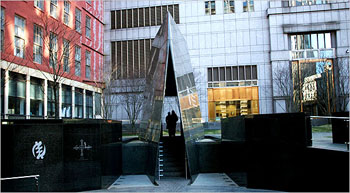 The African Burial National Monument in Lower Manhattan includes a memorial sculpted by Rodney Leon. Photograph by Jessica Ebelhar, New York Times. |
That is a reason why Saturday's opening of the African Burial Ground Visitor Center, near where these remains were reinterred, is so important. Among the scars left by the heritage of slavery, one of the greatest is an absence: where are the memorials, cemeteries, architectural structures or sturdy sanctuaries that typically provide the ground for a people's memory?
The discovery of this cemetery some two centuries after it was last used provided just such a foundation, disclosing not just a few beads, pins and buttons, but offering the first large-scale traces of black American experience in this region. Here, underneath today's commercial bustle, are tracts of land that for more than a century were relegated to the burial of the city's slaves and free blacks.
In all 419 bodies were discovered -- giving a clue to how many others still lie under the foundations of Lower Manhattan. (Estimates have ranged from 10,000 to 20,000.)
The new visitor center, inside the federal building that was ultimately constructed over a portion of the excavation (the other part became a burial site and memorial), is meant to explain the site's significance -- not a simple task, because the passions stirred by the discovery were not just historical, but also personal. There was a felt connection to the people, unearthed in their disintegrating coffins, who in the early decades of the city's settlement were often forced into its construction. A sacral regard for the dead was joined with a sense of identification and continuity.
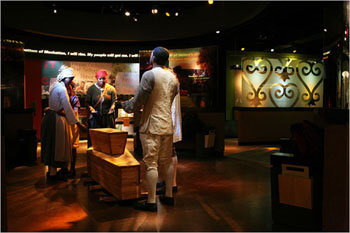 The centerpiece of the new visitor center exhibits is a life-size tableau of a burial ceremony. Photograph by Chester Higgins Jr., New York Times. |
The months after the discovery only amplified those passions. While the city has paved over a multitude of cemeteries in its hectic past, here the government's initial intention to exhume and preserve the remains while proceeding with its nearly $300 million construction project was sadly inadequate. Protests and political interventions led to the suspension of building and the revision of plans.
In 1993 the burial ground was placed on the National Register of Historic Places; in 2006 the memorial site was declared a national monument and placed under the oversight of the National Park Service. In 2007 a memorial sculptured by Rodney Leon was unveiled, and now the site's $4.4 million visitor center means to place it all in context.
To do this the center's exhibition (created by Amaze Design) combines a sense of communal rededication with a sense of historical enterprise that followed the 1991 discovery. A revision in popular understanding has taken place about slavery's history in New York City, evident in several recent books and an impressive series of shows at the New-York Historical Society. In the 18th century slaves may have constituted a quarter of the New York work force, making this city one of the colonies' largest slave-holding urban centers.
For seven years scholars at Howard University, led by the anthropologist Michael L. Blakey, also examined every bone fragment and relic found at the site before they were ceremonially reinterred in 2003 at a memorial next to the slightly shrunken footprint of the new building. The scholarly reports, alluded to in some of the displays, show injuries to bones attributed to strenuous physical labor, signs of malnutrition and some physical indications (like filed teeth) of an African heritage.
These various themes do not always accompany one another felicitously in the exhibition; in fact the passion and the detached historical analysis often seem to trip over each other, but the overall impact is considerable. The visitor center also includes an introductory film, a shop and classroom space. [Read the full article in the New York Times >>>].
[Return to table of contents]Another African Burial Ground
Article posted online March 25, 2010, at
http://www.citylimits.org/news/article.cfm?article_id=3910
Copyright 2010 City Limits
Though a bus depot occupies most of an old Harlem church cemetery site, there's still hope for memorializing African history uptown.
East Harlem -- Efforts to preserve a pre-colonial burial site on 126th Street near the East River bears some resemblance to the fight that forced a construction shut-down at the African Burial Ground downtown in 1993.
Unlike the African Burial Ground in Lower Manhattan, however -- now a national monument -- the African burial ground in Harlem contains no shiny plaques or national park rangers in uniform. At the Harlem site, there's nothing to acknowledge it as the final resting place of slave and free African families buried there when Dutch settlers farmed upper Manhattan.
The only stone slab at the site is the concrete floor of the Metropolitan Transit Authority bus garage sitting on top of tons of fill mingled with human remains. The Harlem African Burial Ground Task Force -- composed of church leaders, activists, historians and elected officials -- seeks preservation and official recognition of the colonial-era cemetery.
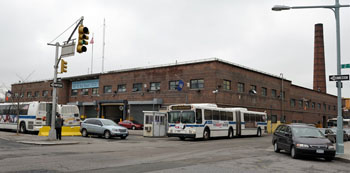 This bus depot, which is set for expansion, sits atop an old burial ground. Photograph by Richard Caplan, City Limits. |
Church records show that free and enslaved Africans from all over Manhattan buried their dead in the cemetery of the Reformed Low Dutch Church, now Elmendorf Reformed Church, on First Avenue between 126th and 127th Streets. Researchers agree that beginning in the 17th century and ending in 1856, Africans buried their dead in what is now called East Harlem back when Harlem was farmland.
While the exact number buried there is not known, the task force is combing through relevant church records to piece together details about the site. In records already uncovered, several names have been found: Henry Blake, an unnamed child of the last name Blake, Israel Williams and Mary Elizabeth Ferguson.
But most had forgotten the burial ground, apart from Elmendorf Church archivists, until 2008 when it was brought back into public discourse as the Department of Transportation began work on the Willis Avenue Bridge just east of where historical maps suggest the burial ground is located. In 2015, the MTA also plans to expand the bus depot that now sits on top of the burial ground. Task force members say that the agencies were not been in communication with them the about the plans.
Eric Tait, Jr., vice president of the Harlem Preservation Foundation and a member of the Harlem African Burial Ground Task Force, feels a bit of uncomfortable déjà vu. Tait is the creator of a documentary, "Then I'll be Free to Travel Home," about activists' ultimately successful efforts to have memorials created for the African Burial Ground in Lower Manhattan.
Now, Tait fears those lessons are not being applied uptown. "Unfortunately the MTA and DOT seem determined not to learn from the 13-year battle our community fought in lower Manhattan beginning in 1991. That long, bitter struggle was a direct result of the General Services Administration's federal bureaucracy and not having any persons of color or any concerned GSA person who would take seriously the cultural and historical significance of that African burial ground," he said.
At a public hearing at the Elmendorf Reformed Church on March 19 -- hosted by State Senators Bill Perkins and Jose Serrano, whose districts both include East Harlem -- that's not how transportation officials described their work.
DOT Manhattan Borough Commissioner Margaret Forgione testified at the hearing and brought along an engineer and an archaeologist. "The department takes the presence of any historical or cultural resource in or near the bridge work very seriously," said Forgione. "We've been working with an archaeological firm for the past 10 years to help us understand the African burial site and to monitor excavation. Because the area where the bridge work is being done was under water when the cemetery was in operation and because it was excavated many times since, we believe it is highly unlikely that there are human remains or cultural artifacts in the area of our construction zone," said Forgione, who noted that no human remains have been found by DOT workers.
Representatives from Historical Perspectives, the archaeology firm hired by DOT, presented a timeline, background information and several historical maps that indicate the location of the cemetery is outside of the boundaries of construction work under way for the Willis Avenue Bridge. When asked by Senator Perkins how far away the construction zone is from the accepted eastern boundary of the burial ground, Forgione said she would have to get back to him with an exact measurement.
MTA government affairs director Hilary Ring reminded hearing attendees that the burial ground was originally paved over, not by the MTA, but by the Third Avenue Railway in 1947 to house trolley cars. "Construction of the new 126th Street depot is currently planned between 2015 and 2019. Our preparatory work will include archaeological studies and the design of the new structure," said Ring, who outlined the acronym-laced environmental assessment process associated with depot construction.
Rev. Patricia A. Singletary, Elmendorf's pastor and a leader within the Harlem African Burial Ground Task Force, would like to see the burial ground undisturbed and a cultural center on or near the site created.
"We recognize that both the Department of Transportation and the Metropolitan Transportation (MTA) are attempting to meet complicated transportation needs of the city. However, we are certain that both agencies can meet these needs without violating this sacred site or ignoring the community's significant place in American history," Singletary said.
The New York State Historic Preservation Office recently recommended that the 350-year-old Elmendorf Church (now located on 121st Street) be placed on the state and national registers of historic places. The burial ground was not included in the recommendation.
Task force members ultimately plan to seek historic designation for the burial ground as well as the construction of a museum or cultural center exhibiting documents and artifacts from Harlem's colonial days.
"This burial ground is significant on many different levels," Sen. Serrano said at the start of the hearing. "If we have a proper commemoration, it will serve as an inspiration for the local residents and as an educational landmark for our youth in this community."
[Return to table of contents]Haiti's History as First Black Republic
Creates a Special Bond with Many African-Americans
AP National Writer
Article posted online Jan. 17, 2010, at
http://www.latimes.com/news/nationworld/
nation/wire/sns-ap-us-haiti-blacks,0,5283621.story
Copyright 2010 L.A. Times and AP News
A terrible earthquake anywhere in the Caribbean would have hit a sympathetic nerve in most Americans. But as the first black republic of the West, born when slaves overthrew white rulers, Haiti holds a unique place in the hearts of many American blacks.
That's why Toussaint Tabb, a college student named after the Haitian slave-turned-general who led the revolution more than 200 years ago, was jolted when he saw televised images of the devastation in Haiti.
"They looked just like any other black people over here in America," said Tabb, a history major at North Carolina Central University. "They're the same people."
"I would say it hit home harder because it was a predominantly black country, and my name is Toussaint and it's Haiti."
Joel Dreyfuss, a native Haitian and editor of the black-oriented Web site TheRoot.com, said American blacks easily "could have ended up in Haiti instead of the U.S., depending on where the slave ship stopped."
"I think there is a connection," Dreyfuss continued. "It's not unreasonable or racist, it's human nature, just as Jews identify with Israel. ... There's a natural sense of identification with people who look like yourself."
Much of that connection revolves around racial issues, said Jean-Max Hogarth, a physician born in the United States to Haitian immigrants.
Haiti's status as the poorest nation in the Western Hemisphere "has a lot to do with the fact it has been independent since 1804, it had a long period of discrimination, it had to pay reparations" and had corrupt dictators, said Hogarth, whose medical practice donated a five-figure sum to send him and other doctors to Haiti to treat earthquake victims.
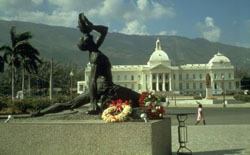 Sculpture of the "Black Maroon" with Presidential Palace in background, Port-au-Prince, Haiti, 1970. Photograph by Jerome Handler. http://hitchcock.itc.virginia.edu/Slavery/. |
"That has created further solidarity with African-Americans," he said. "We think about Haiti being a nation that gained its own independence through struggle. It gives a sense of pride not only for Haitians, but for African-Americans as well."
Under French rule, Haiti's abundant sugar plantations made it perhaps the richest colony of the Caribbean. The slave rebellion began about 1790 and a leader soon emerged: Toussaint L'Overture. After years of fierce fighting, L'Overture was captured by Napoleon's forces and died in France.
The rebellion lived on, and Napoleon's mighty forces were defeated. Haiti declared itself a nation on Jan. 1, 1804. For years to come, however, Haiti would pay reparations to France.
The loss of Haiti's riches and strategic location was part of Napoleon's decision to sell the Louisiana Purchase, which doubled the size of the United States.
In America, where blacks were still seeking freedom, there was pride and wonder that Haitians had seized their destiny. This left an indelible imprint on African-American culture. [Read the full article in the L.A. Times >>>].
[Return to table of contents]Groundbreaking for Vesey Monument
Article posted online Feb. 2, 2010, at
http://www.postandcourier.com/news/2010/feb/02/groundbreaking/
Copyright 2010 Post and Courier of Charleston, S.C.
Vesey known for planning slave rebellion; monument bound to stir feelings of admiration, anger
In an event sure to rekindle the racially polarized debate over Denmark Vesey's place in history, a site in Hampton Park was dedicated Monday for a monument to the man hanged for plotting a slave rebellion in Charleston.
A model of the new Denmark Vesey Memorial that will be erected in Hampton Park, designed by Ed Dwight.
To the local politicians, religious leaders and historians at the event, Vesey was a civil rights leader acting on a universal desire for justice that unites all people. Monument designer Ed Dwight favorably compared Vesey to Dr. Martin Luther King Jr.
But this is Charleston, where the hanging of a portrait of Vesey in the municipal auditorium in 1976 -- more than 150 years after Vesey was himself publicly hanged -- prompted much criticism, and the theft of the painting.
"It was very controversial," College of Charleston history professor Bernard Powers Jr. said. "People were writing to The News and Courier expressing outrage that the portrait of a criminal could be hung in a public place."
The painting was returned, and more securely mounted, after Charleston Mayor Joe Riley said the city would commission a replacement if the painting remained missing.
Powers, a member of the committee planning the Vesey monument, said he smiles every time he sees the painting.
In Hampton Park on Monday, in a clearing not far behind the large gazebo on Mary Murray Boulevard, the Rev. Joseph Darby acknowledged both the strong feelings about Vesey and the day's chilly weather in his opening comments.
"God ordered this weather for everyone who said it would be a cold day before there was a statue for Denmark Vesey in Charleston," Darby said.
Riley described Vesey as an important civil rights figure, part of the "substantially untold story of African-American history and life in this community and this country, and their role in building America."
"We tell these untold stories so the truth will set us free," the mayor said.
Vesey and 34 other alleged conspirators were hanged in the summer of 1822. Vesey was convicted of plotting a bloody uprising in Charleston, in which enslaved blacks and freed men like himself would take up arms and slaughter the white residents, and then flee to Haiti.
Vesey had purchased his freedom after winning a lottery.
Artist Ed Dwight discusses the new Denmark Vesey memorial that will be erected in Hampton Park. The civil rights leader was hanged in 1822 for plotting an uprising in Charleston.
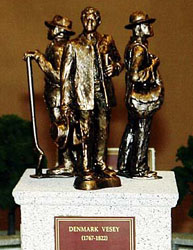 A model of the new Denmark Vesey Memorial that will be erected in Hampton Park, designed by Ed Dwight. Photo by Grace Beahm. |
Whether Vesey actually plotted an uprising remains a question debated by historians, with little to go upon but spotty records of the trial. Much of the evidence was testimony from slaves who were rewarded financially, freed, or spared death sentences for their cooperation.
Powers said some questions are unanswered, but he believes the case has been made that Vesey did plan the uprising.
Certainly, South Carolinians had no doubt the insurrection was real.
The foiled uprising prompted the city to establish an armory and militia training ground that became The Citadel and what is now Marion Square, and restrictive laws put harsh new limits on blacks in Charleston, whether enslaved or free.
The planned Vesey monument has been in the works since 1996, with Charleston County Councilman Henry Darby leading the effort.
The "Denmark Vesey: Spirit of Freedom Monument" has been designed to feature a bronze statue of Vesey and the other ringleaders in the plotted uprising, Peter Poyas and Jack "Gullah Jack" Purcell, standing atop a 5-foot granite pedestal on a plaza.
[Return to table of contents]Black Schools Restored as Landmarks
Article posted online Jan. 15, 2010, at
http://www.nytimes.com/2010/01/15/us/15schools.html
Copyright 2010 New York Times
Columbia, S.C. -- Until 1923, the only school in the largely black farm settlement of Pine Grove was the one hand-built by parents, a drafty wooden structure in the churchyard. Anyone who could read and write could serve as teacher. With no desks and paper scarce, teachers used painted wood for a blackboard, and an open fireplace provided flashes of warmth to the lucky students who sat close.
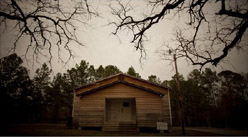 The Pine Grove school in Columbia S.C., built in the 1920s with funding from the philanthropist Julius Rosenwald, is being restored as a landmark. Photograph by David Walter Banks for New York Times. |
This changed after a Chicago philanthropist named Julius Rosenwald, the president of Sears, Roebuck, took up the cause of long-neglected education for blacks at the urging of Booker T. Washington, the proponent of black self-help. By the late 1920s, one in three rural black pupils in 15 states were attending a new school built with seed money, architectural advice and supplies from the Rosenwald Fund.
"It was a big step up, going to a school that was painted and had a potbellied stove," said Rubie Schumpert, 92, one of nine siblings who attended the Rosenwald school in Pine Grove -- and one of three sisters who went on to college and careers as teachers.
If the desks and textbooks were hand-me-downs from white schools, at least there were real blackboards and rough paper for writing. If there was still no electricity, columns of windows maximized the natural light.
Today, this hard-used wooden building, which narrowly escaped demolition, is one of several dozen Rosenwald schools being restored as landmarks -- newly appreciated relics of important chapters in philanthropy and black education. The schools were a turning point, sparking improved, if still unequal, education for much of the South, historians say.
The Smithsonian Institution's new National Museum of African-American History and Culture is acquiring desks and other artifacts, as well as oral histories, from another Rosenwald school in South Carolina, said Jacquelyn D. Serwer, chief curator.
Pine Grove's school was one of more than 5,000 built for rural blacks throughout the South between 1912 and 1937 with aid from Rosenwald. Spot surveys indicate that no more than 800 remain, their historical importance often unknown to residents and even to many of the dwindling alumni, according to the National Trust for Historic Preservation, which calls the schools an endangered treasure.
The need for them reflected the segregation of the age and the paltry financing of black schools. But historians say their blossoming also demonstrated the strong community ties forged by rural blacks and a fierce determination to educate their children despite official indifference.
"We were on the verge of losing an important part of the American story," said Richard Moe, president of the National Trust, which during the last two years, with a $2 million donation from Lowe's, has aided the renovation of 33 Rosenwald schools, including Pine Grove's, as museums or community centers. States and communities have identified scores more in dilapidated condition. [Read the full article >>>].
[Return to table of contents]Harriet Tubman Relics to go to D.C. Museum
Philadelphia Inquirer Culture Writer
Article posted online March 10, 2010, at
http://www.philly.com/philly/news/local/87198147.html
Copyright 2010 Philadelphia Inquirer
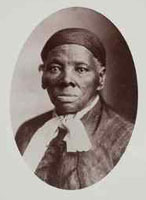
For bibliophile and educator Charles Blockson, the mute, simple evidence of abolitionist Harriet Tubman's life -- photographs, dinner utensils, hymnal -- possess a personal power, a resonance that flows over decades.
He has maintained stewardship of these fragile relics for years, holding them, he says, in trust. Now the moment has come to place them before the larger world.
Today, Blockson will transfer his collection of 39 Tubman artifacts to the Smithsonian Institution's National Museum of African American History and Culture, expected to open in Washington in 2015, and Rep. Robert A. Brady (D., Pa.) will host a presentation honoring the gift and the donor at the Longworth House Office Building.
Brady is chairman of the Committee on House Administration, which monitors the Library of Congress and the Smithsonian Institution, among other things. At the presentation, Blockson and museum director Lonnie Bunch 3d will discuss the gift and the artifacts and, of course, the woman behind them.
"It is an honor to be able to show the private side of a very public person, a woman whose very work for many years put her in service to countless others," Bunch said in a statement.
The occasion marks Women's History Month and the 97th anniversary of Tubman's death on March 10, 1913. (She was born into slavery about 1820 in Maryland and in 1849 escaped to Philadelphia, where she began her work as an indefatigable conductor on the Underground Railroad.) Descendants of Tubman will also attend the presentation.
Blockson, emeritus curator of the Charles Blockson Afro-American Collection at Temple University, spent several years in the 1980s documenting the workings of the Underground Railroad and is credited with pushing the federal government toward establishment of a National Park Service program commemorating and marking the road from slavery to freedom.
Blockson's own ancestors benefited from Tubman's tireless efforts and from those of William Still, the African American abolitionist and director of the Pennsylvania Anti-Slavery Society's efforts assisting those escaping bondage.
"My ancestors escaped with her and with William Still," Blockson said. "They took them right across the river into Canada. I still have relatives in Canada."
During the Civil War, Tubman headed south and labored as a spy for the Union Army. Later in life she worked hard for the enfranchisement of women.
Among the items Blockson has donated to the museum are a silk and linen shawl given to Tubman by Queen Victoria. ("Queen Victoria called her Auntie Harriet," said Blockson.) Also donated are Tubman's signed hymn book, a number of photographs (including a somber portrait of Tubman lying in state at her funeral at A.M.E. Zion Church in Auburn, N.Y.), cutlery from the Tubman dinner table, pamphlets, and other items.
"What's wonderful about this collection is that they are very personal pieces," said Jacquelyn Serwer, the Smithsonian's chief curator. "When we first saw them . . . we just felt as though she was in the room. These items will give people the opportunity to make a personal connection with one of our greatest historical figures."
[Return to table of contents]
New Book
The Atlantic World and the Gullah Geechee
Edited by Philip Morgan
University of Georgia Press, Cloth, 320 pp.,
ISBN-13: 978-0-8203-3064-8, Feb. 2010.
Description from the Publisher:
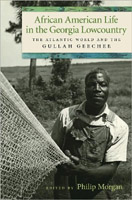 The lush landscape and subtropical climate of the Georgia coast only enhance the air of mystery enveloping some of its inhabitants -- people who owe, in some ways, as much to Africa as to America. As the ten previously unpublished essays in this volume examine various aspects of Georgia Lowcountry life, they often engage a central dilemma: the region's physical and cultural remoteness helps to preserve the venerable ways of its black inhabitants, but it can also marginalize the vital place of Lowcountry blacks in the Atlantic World.
The lush landscape and subtropical climate of the Georgia coast only enhance the air of mystery enveloping some of its inhabitants -- people who owe, in some ways, as much to Africa as to America. As the ten previously unpublished essays in this volume examine various aspects of Georgia Lowcountry life, they often engage a central dilemma: the region's physical and cultural remoteness helps to preserve the venerable ways of its black inhabitants, but it can also marginalize the vital place of Lowcountry blacks in the Atlantic World. The essays, which cover a period from the founding of the Georgia colony in the early 1700s until the early 1900s, explore a range of topics, all within the larger context of the Atlantic world. Included are essays on the double-edged freedom that the American Revolution made possible to black women, the Lowcountry as site of the largest gathering of African Muslims in early North America, and the coexisting worlds of Christianity and Conjuring in coastal Georgia and the links (with variations) to African practices.
A number of fascinating, memorable characters emerge, among them the defiant Mustapha Shaw, who felt entitled to land on Ossabaw Island and resisted its seizure by whites only to become embroiled in struggles with other blacks; Betty, the slave woman who, in the spirit of the American Revolution, presented a "list of grievances" to her master; and S'Quash, the Arabic-speaking Muslim who arrived on one of the last legal transatlantic slavers and became a head man on a North Carolina plantation.
[Return to table of contents]
New Book
Atlantic Slavery and the Representation of Emancipation
By Marcus Wood
University of Georgia Press, Cloth, 516 pp.,
ISBN-13: 978-0-8203-3426-4, Feb. 2010.
Description from the Publisher:
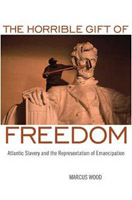 In his tour-de-force Blind Memory, Marcus Wood read the visual archive of slavery in eighteenth- and nineteenth-century America and Britain with a closeness and rigor that until then had been applied only to the written texts of that epoch. Blind Memory changed the way we look at everything from a Turner seascape to a crude woodcut in a runaway slave advertisement. The Horrible Gift of Freedom brings the same degree of rigor to an analysis of the visual culture of Atlantic emancipation.
In his tour-de-force Blind Memory, Marcus Wood read the visual archive of slavery in eighteenth- and nineteenth-century America and Britain with a closeness and rigor that until then had been applied only to the written texts of that epoch. Blind Memory changed the way we look at everything from a Turner seascape to a crude woodcut in a runaway slave advertisement. The Horrible Gift of Freedom brings the same degree of rigor to an analysis of the visual culture of Atlantic emancipation.Wood takes a troubled and troubling look at the iconography inspired by the abolition of slavery across the Atlantic diaspora. Why, he asks, did imagery showing the very instant of the birth of black slave freedom invariably personify Liberty as a white woman? Where did the image of the enchained kneeling slave, ubiquitous in abolitionist visual culture on both sides of the Atlantic, come from? And, most important, why was freedom invariably depicted as a gift from white people to black people? In order to assess what the inheritance of emancipation imagery means now and to speculate about where it may travel in the future, Wood spends the latter parts of this book looking at the 2007 bicentenary of the 1807 Slave Trade Abolition Act. In this context a provocative range of material is analyzed including commemorative postage stamps, museum exhibits, street performances, religious ceremonies, political protests, and popular film.
By taking a new look at the role of the visual arts in promoting the "great emancipation swindle," Wood brings into the open the manner in which the slave power and its inheritors have single-mindedly focused on celebratory cultural myths that function to diminish both white culpability and black outrage. This book demands that the living lies developed around the memory of the emancipation moment in Europe and America need to be not only reassessed but demolished.
[Return to table of contents]
New Book
By C. S. Manegold
Princeton University Press, Cloth, 344 pp.,
ISBN-13: 9780691131528, Dec. 2009.
Description from the Publisher:
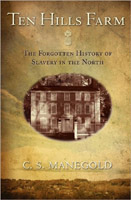 Ten Hills Farm tells the powerful saga of five generations of slave owners in colonial New England. Settled in 1630 by John Winthrop, governor of the Massachusetts Bay Colony, Ten Hills Farm, a six-hundred-acre estate just north of Boston, passed from the Winthrops to the Ushers, to the Royalls -- all prominent dynasties tied to the Native American and Atlantic slave trades. In this mesmerizing narrative, C. S. Manegold exposes how the fortunes of these families -- and the fate of Ten Hills Farm -- were bound to America's most tragic and tainted legacy. Manegold follows the compelling tale from the early seventeenth to the early twenty-first century, from New England, through the South, to the sprawling slave plantations of the Caribbean. John Winthrop, famous for envisioning his "city on the hill" and lauded as a paragon of justice, owned slaves on that ground and passed the first law in North America condoning slavery. Each successive owner of Ten Hills Farm -- from John Usher, who was born into money, to Isaac Royall, who began as a humble carpenter's son and made his fortune in Antigua -- would depend upon slavery's profits until the 1780s, when Massachusetts abolished the practice. In time, the land became a city, its questionable past discreetly buried, until now. Challenging received ideas about America and the Atlantic world, Ten Hills Farm digs deep to bring the story of slavery in the North full circle -- from concealment to recovery.
Ten Hills Farm tells the powerful saga of five generations of slave owners in colonial New England. Settled in 1630 by John Winthrop, governor of the Massachusetts Bay Colony, Ten Hills Farm, a six-hundred-acre estate just north of Boston, passed from the Winthrops to the Ushers, to the Royalls -- all prominent dynasties tied to the Native American and Atlantic slave trades. In this mesmerizing narrative, C. S. Manegold exposes how the fortunes of these families -- and the fate of Ten Hills Farm -- were bound to America's most tragic and tainted legacy. Manegold follows the compelling tale from the early seventeenth to the early twenty-first century, from New England, through the South, to the sprawling slave plantations of the Caribbean. John Winthrop, famous for envisioning his "city on the hill" and lauded as a paragon of justice, owned slaves on that ground and passed the first law in North America condoning slavery. Each successive owner of Ten Hills Farm -- from John Usher, who was born into money, to Isaac Royall, who began as a humble carpenter's son and made his fortune in Antigua -- would depend upon slavery's profits until the 1780s, when Massachusetts abolished the practice. In time, the land became a city, its questionable past discreetly buried, until now. Challenging received ideas about America and the Atlantic world, Ten Hills Farm digs deep to bring the story of slavery in the North full circle -- from concealment to recovery.[Return to table of contents]
New Book
Stories of My Family's Journey to Freedom
By John F. Baker Jr.
Simon & Schuster, Paperback, 432pp.,
ISBN-13: 9781416567417, Jan. 2010.
Description from the Publisher:
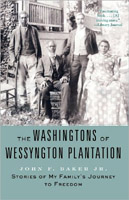 When John F. Baker Jr. was in the seventh grade, he saw a photograph of four former slaves in his social studies textbook. When he learned that two of them were his grandmother's grandparents, he began the lifelong research project that would become The Washingtons of Wessyngton Plantation, the fruit of more than thirty years of archival and field research and DNA testing spanning 250 years.
When John F. Baker Jr. was in the seventh grade, he saw a photograph of four former slaves in his social studies textbook. When he learned that two of them were his grandmother's grandparents, he began the lifelong research project that would become The Washingtons of Wessyngton Plantation, the fruit of more than thirty years of archival and field research and DNA testing spanning 250 years.A descendant of Wessyngton slaves, Baker has written the most accessible and exciting work of African American history since Roots. He has not only written his own family's story but included the history of hundreds of slaves and their descendants now numbering in the thousands throughout the United States. More than one hundred rare photographs and portraits of African Americans who were slaves on the plantation bring this compelling American history to life.
Founded in 1796 by Joseph Washington, a distant cousin of America's first president, Wessyngton Plantation covered 15,000 acres and held 274 slaves, whose labor made it the largest tobacco plantation in America. Atypically, the Washingtons sold only two slaves, so the slave families remained intact for generations. Many of their descendants still reside in the area surrounding the plantation. The Washington family owned the plantation until 1983; their family papers, housed at the Tennessee State Library and Archives, include birth registers from 1795 to 1860, letters, diaries, and more. Baker also conducted dozens of interviews -- three of his subjects were more than one hundred years old -- and discovered caches of historic photographs and paintings.
A groundbreaking work of history and a deeply personal journey of discovery, The Washingtons of Wessyngton Plantation is an uplifting story of survival and family that gives fresh insight into the institution of slavery and its ongoing legacy today.
[Return to table of contents]
New Book
By Jane G. Landers
Harvard University Press, Cloth, 352pp.,
ISBN-13: 9780674035911, Feb. 2010.
Description from the Publisher:
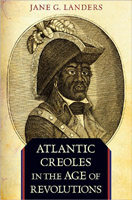 Sailing the tide of a tumultuous era of Atlantic revolutions, a remarkable group of African-born and African-descended individuals transformed themselves from slaves into active agents of their lives and times. Big Prince Whitten, the black Seminole Abraham, and General Georges Biassou were "Atlantic creoles," Africans who found their way to freedom by actively engaging in the most important political events of their day. These men and women of diverse ethnic backgrounds, who were fluent in multiple languages and familiar with African, American, and European cultures, migrated across the new world’s imperial boundaries in search of freedom and a safe haven. Yet, until now, their extraordinary lives and exploits have been hidden from posterity.
Sailing the tide of a tumultuous era of Atlantic revolutions, a remarkable group of African-born and African-descended individuals transformed themselves from slaves into active agents of their lives and times. Big Prince Whitten, the black Seminole Abraham, and General Georges Biassou were "Atlantic creoles," Africans who found their way to freedom by actively engaging in the most important political events of their day. These men and women of diverse ethnic backgrounds, who were fluent in multiple languages and familiar with African, American, and European cultures, migrated across the new world’s imperial boundaries in search of freedom and a safe haven. Yet, until now, their extraordinary lives and exploits have been hidden from posterity.Through prodigious archival research, Jane Landers radically alters our vision of the breadth and extent of the Age of Revolution, and our understanding of its actors. Whereas Africans in the Atlantic world are traditionally seen as destined for the slave market and plantation labor, Landers reconstructs the lives of unique individuals who managed to move purposefully through French, Spanish, and English colonies, and through Indian territory, in the unstable century between 1750 and 1850. Mobile and adaptive, they shifted allegiances and identities depending on which political leader or program offered the greatest possibility for freedom. Whether fighting for the King of Kongo, England, France, or Spain, or for the Muskogee and Seminole chiefs, their thirst for freedom helped to shape the course of the Atlantic revolutions and to enrich the history of revolutionary lives in all times.
[Return to table of contents]
New Journal
Journal of African and African Diaspora Studies
Edited by Raphael Chijioke Njoku and Matt Childs
Kentucky State University, ISSN: 2151-7215.
Description from the Publisher:
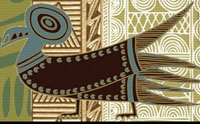 The journal is primarily devoted to publishing original studies related to the linkages and relationships between Africans and the African Diaspora. The journal aims to focus on the varied webs of connections between the Africans and the African Diaspora in an interdisciplinary approach. Studies related to history, politics, culture, literature, gender, music, dance, globalization, war, resistance, and civil rights movements that illuminate the varied experiences of Diasporic people are welcome.
The journal is primarily devoted to publishing original studies related to the linkages and relationships between Africans and the African Diaspora. The journal aims to focus on the varied webs of connections between the Africans and the African Diaspora in an interdisciplinary approach. Studies related to history, politics, culture, literature, gender, music, dance, globalization, war, resistance, and civil rights movements that illuminate the varied experiences of Diasporic people are welcome.Submission and review process: Notes and Records is solely a peer-reviewed journal. Manuscripts should be prepared double-spaced, using font size 12 Times New Roman. Our in-house referencing and citation style is the Chicago Manual format. Please visit our website at: www.kysu.edu/NotesAndRecordsJournal.
[Return to table of contents]
New Journal
Journal of the Vernacular Architecture Forum
Edited by Marta Gutman and Louis P. Nelson
University of Minnesota Press, ISSN: 1934-6832.
Description from the Publisher:
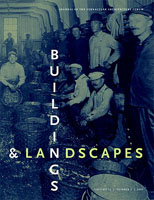 Buildings & Landscapes is the leading source for scholarly work on vernacular architecture of North America and beyond. Under its new name, the journal continues VAF's tradition of scholarly publication going back to the first Perspectives in Vernacular Architecture in 1982. Published through the University of Minnesota Press since 2007, the journal moved from one to two issues per year in 2009.
Buildings & Landscapes is the leading source for scholarly work on vernacular architecture of North America and beyond. Under its new name, the journal continues VAF's tradition of scholarly publication going back to the first Perspectives in Vernacular Architecture in 1982. Published through the University of Minnesota Press since 2007, the journal moved from one to two issues per year in 2009.Buildings & Landscapes examines the places that people build and experience every day: houses and cities, farmsteads and alleys, churches and courthouses, subdivisions and shopping malls. The journal's contributors -- historians and architectural historians, preservationists and architects, geographers, anthropologists and folklorists, and others whose work involves documenting, analyzing, and interpreting vernacular forms -- approach the built environment as a windows into human life and culture, basing their scholarship on both fieldwork and archival research. The editors encourage submission of articles that explore the ways the built environment shapes everyday life within and beyond North America. Articles submitted to Buildings & Landscapes will be assessed using a double-blind peer review process; manuscripts should not be submitted for publication elsewhere while under review by the journal.
Contributors should submit manuscripts based on original research, not previously published in print or electronic media; manuscripts need not be based on material presented at a VAF annual meeting. Visit http://www.vafweb.org for guidelines. Please send electronic copies of completed articles (approximately 25 pages of text) with illustrations (15-20) and bibliographic endnotes by email to both editors: Marta Gutman, Associate Professor of Architecture (History and Theory), Spitzer School of Architecture, City College of the City University of New York, mgutman@ccny.cuny.edu; Louis P. Nelson, Associate Professor of Architectural History, School of Architecture, University of Virginia, ln6n@virginia.edu.
[Return to table of contents]
Many Voices -- One Story?
Public History Narratives of Native American and African American Histories
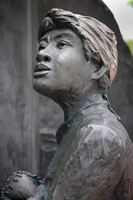
A conference hosted by the Department of History at North Carolina State University, Raleigh. Since the emergence of social history in the 1960s and 1970s, public history venues like museums, historic sites and parks, and historical re-enactments have wrestled with expanding their narratives to incorporate voices that had been silenced for so long. African Americans and Native Americans had been largely absent from public history narratives, a consequence of insufficient resources and interpretive biases that evidenced the authority of dominant racial and class powers. But publications like James and Lois Horton's Slavery and Public History, programs like Colonial Williamsburg's Revolutionary City, and the opening of the Smithsonian's National Museum of the American Indian and plans for a Smithsonian African American Museum herald the new voices being heard in historic interpretation today -- voices empowered by grassroots public history projects and movements that have contributed to a new pluralism of interpretative narratives. This conference seeks to explore interpretive narratives about Native American and African American histories, and they ways in which they have challenged the traditional narrative at America's historic sites, parks, and museums.
Scheduled presentations: From Storefront to Monument: Debating the Nationalization of the Black Museum Movement; The Akwesasne Museum: A Place for Connecting Generations through Traditional Arts Programs; Creoles, Indians, and Sugar Princes: Interpretation of Houma Indian History on Louisiana's River Road; Redefining the "Spirit of Union": Federally Preserved Battlefields and the Integration of Native American and African American Voices into the National Narrative; Without Sanctuary: Lynching Photography in America-An Exhibit; New Voices at North Carolina's Historic Sites; American Indian and African American Voices in Colonial Williamsburg's Revolutionary City; IndiVisible: African-Native Lives in the Americas-An Exhibit; A Tale of Two Cities: Interpreting the Underground Railroad in Niagara Falls and Lewiston, New York; Detached Kitchens, Detached Memories? The Plantation Landscape and the Challenge of Inclusive Museum Narration; The Archaeology of Slavery at Thomas Jefferson's Poplar Forest; Revisioning the Legacy of Slavery in Artis Lane's Portrait Bust of Sojourner Truth and Alison Saar's Swing Low; Many Voices-One Story? A Discussion on Race, Power, and Representation in Public History.
For additional information, contact: Craig Friend, Dept. of History, North Carolina State University, Campus Box 8108, Raleigh NC 27695-8108, 919-513-2227, email: craig_friend@ncsu.edu. Visit the website at http://faculty.chass.ncsu.edu/ctfriend/PHconference.htm.
[Return to table of contents]Society for Pennsylvania Archaeology
81st Annual Meeting
The theme of the 81st Annual Meeting will be "Archaeology Along Pennsylvania's Streams, Rivers and Hills." The conference includes a symposium entitled "North of the Mason-Dixon line: Current Research and Future Prospects in African Archaeology in Pennsylvania," to be convened on April 9, 2010. Presenters and paper titles: Rebecca Yamin and Grace Ziesing, "Josiah Eddy, George Washington, and the Complexity of the Past"; David Orr and Christopher Barton, "Timbuctoo: The Discovery of an African-American Community"; William J. Chadwick and Peter A. Leach, "Geophysical Survey at the Site of Timbuctoo, Burlington County, New Jersey"; James Delle, "Race, Resistance, and Remembrance: Archaeology and Social Memory of the Christiana Riot"; John Roby, "Practice and Memory Work on the Perkins-Dennis Farm"; Wade P. Catts, "Archaeological Investigations at the Diggs-Monroe House, South Washington Street, Gettysburg." For more information, visit the conference website: http://www.pennsylvaniaarchaeology.com/annualmeeting.html.
[Return to table of contents]Women's Memory-Work: Gendered Dilemmas of Social Transformation
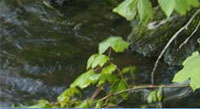
The three-day international conference, "Women's Memory-Work: Gendered Dilemmas of Social Transformation," seeks to explore women-centered expressions of historical experience as fertile ground for cultural agency and social transformation in national and transnational socioeconomic and political arenas. Inspired by the United Nations Security Council Resolutions 1325 and 1820, which call for a gender-sensitive implementation of national stability in peacekeeping operations, this conference invites the participation of scholars, activists and artists whose work addresses women"s engagement with the public memory of nations emerging from conflict and belonging to the class of "transitioning democracies." At the same time, the conference intends to generate a larger dialogue that includes insights associated with women"s production of and participation in public and commemoration rituals in polities that are beyond the "transitioning" phase of democratic development, but which remain entangled in dilemmas of uneven historical and political representation and economic or territorial disparities.
The central questions the conference will be exploring are: What are the politics and ethics of producing and reproducing gendered memory-work? Who can participate? Who is excluded? What are the critical variables of potential alliances? Where do obstacles and limitations lie? In what ways might we be able to re-read traditional performances of womanhood, associated with upholding conservative social values of kinship and nationhood (among others), so as to reassess their potential participation in a radical politics and ethics of remembering, but also of envisioning future paradigms and material practices? How do women's memories of traumatic repression or dogged dissidence participate in the historical imaginary and political vision of cultural identities and transitioning democracies? What are the challenges we face in building bridges across local gendered activism and international discourses of human rights and law? And how may we insist on the importance of gendered memory-work without re-inscribing the conceptual boundaries we seek to undermine?
This project is funded by the Irish Research Council for the Humanities and Social Sciences and the Department of Foreign Affairs of the Irish Government. As a transnational and multidisciplinary project, the conference aims to cover a wide range of disciplines -- anthropology, geography, political philosophy, law, history, religion, sociology, psychology, literature, fine arts and cultural studies at large. We welcome proposals for papers in topics that include, but are not limited to: Gendered memory and political and cultural subjectivity; Female consciousness and larger social subalternities (racial, ethnic, sexual, etc.); Women's cultural andpolitical participation in peace processes; Gendered politics and ethics of witnessing and testimony ("traumatic" or otherwise); Women's rights and human rights; Women's self-referential narratives (autobiography, memoir) and memory performance; Women's agency beyond alterity; Gendered labor and ecocriticism; Women and the "war-story" (official or sectarian); Gendered models of reconciliation, forgiveness, healing; Gendered dilemmas of redressing the past, seeking justice/peace; Gender and strategic essentialism.
Confirmed Keynote Speakers: Marjorie Agosín, Professor of Spanish, Wellesley College, USA; Pumla Gobodo-Madikizela, Professor of Psychology, University of Cape Town, South Africa; Mary L. Keller, Associate Professor of Religious Studies, University of Wyoming, USA; Mary Nash, Professor of Contemporary History, University of Barcelona, Spain. Please submit a 300 word abstract for a 20-minute presentation by April 16, 2010 to womensmemory@ul.ie. All proposals will receive acknowledgement of receipt within a week from the closing date, and a final reply as to the acceptance of the proposal by May 14, 2010. If an abstract is accepted for the conference we request that a full draft paper is made available to the conference committee by July 31, 2010. A selection of papers from the conference will be published. We also welcome thematic panel proposals (maximum 4 speakers). Please submit the abstract or panel proposal with abstracts in Word or RTF formats along with the following information: Name of author; Affiliation; Position; Contact information; 1-page CV; If you have questions about the conference or about submitting a proposal please direct them to Emma Leahy, emma.leahy@ul.ie. Joint organizing chairs: Cinta Ramblado, Lecturer in Spanish, and Yianna Liatsos, Lecturer in English, University of Limerick.
[Return to table of contents]Imagining Slavery: National Representations
of the History of Slavery and Abolition
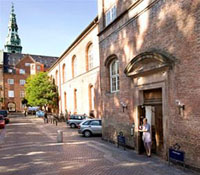
This one-day interdisciplinary workshop, which forms part of the EURESCL research project, will provide scholars with opportunity to examine how the history of slavery and abolition has featured in national histories, national memories, and national educational curriculums. The workshop will draw together scholars from different disciplines and geographic specialisations, and the organizers are especially keen to hear from scholars who work within comparative frameworks. Possible themes include: The history and mythology of 'benign slavery' in national discourses; Anti-slavery, national 'honour' and related models of 'civilization' and the 'civilizing mission'; Forgetting slavery, remembering abolition; Comparative histories of slavery and abolition; Museums, monuments and other national representations of slavery and abolition; Teaching slavery and abolition in national curriculums.
The conference organisers will provide hotel accommodation and catering for speakers, but participants will be responsible for their own travel. To propose a 20-minute paper, to be delivered in English, please send a title and proposal (300 words max.) and a one-page CV to Dr Douglas Hamilton d.hamilton@hull.ac.uk. Abstracts should be submitted by the May, 7, 2010. Further inquiries should also be directed to Dr Hamilton. Scholars who wish to attend, but not to present, should contact Dr Erik Göbel at the Danish National Archives: eg@ra.sa.dk. Co-sponsors: the Danish National Archives, Copenhagen; the Wilberforce Institute for the study of Slavery and Emancipation, University of Hull; and EURESCL: Slave trade, slavery, abolitions and their legacies in European histories and identities.
[Return to table of contents]Association for the Study of African American Life and History
95th Annual Conference
History of Black Economic Empowerment
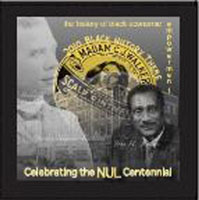
The Association for the Study of African American Life and History (ASALH) is soliciting papers for its 95th Annual Conference. The conference theme, the History of Black Economic Empowerment, acknowledges one the most significant elements of black life. After centuries of slavery, people of African descent in the Americas gained their freedom and found themselves in the struggle to make a living. In America black codes often prevented blacks from owning land, organized labor shut their doors to their fellow workers, and even the white philanthropist who funded black schools denied them opportunities once educated.
Refusing to accept sharecropping and day labor as the only ways of making a living, African Americans became landowners, skilled workers, businessmen and women, and professionals. They eventually created their own unions and professional societies and organizations that promoted racial or collective uplift. In 1910 black and white reformers came together and created an organization that became the National Urban League. Through the years the National Urban League has been at the forefront of the continuing rise of black economic development and empowerment throughout the Americas.
The 95th Annual Conference of the ASALH invites scholars from all disciplines to submit multi-paper panels (a chair, two commentators and two presenters) that examine the many facets of the evolution of black economic development in the Americas from emancipation to the present. Though panels for alternate topics within the African Diaspora will be considered, preference will be given to submissions that address the broad conference theme. As citizens of the world face the current realities of a changing global economy, ASALH is eager to provide scholars with the opportunity to examine and discuss how during the last one hundred years people of African descent met and overcame the challenges to their economic empowerment.
ASALH began accepting proposals on October, 31, 2009. The deadline for submissions is April 30, 2010. All proposals must be submitted electronically to ASALH. Individual papers will be accepted and formed into panels based on quality, fit, and availability of space. In all cases, membership dues must be current before papers are placed on the program. Request for audio-visual support will only be considered for panel submissions that are received before April 30, 2010. For more information, visit http://www.asalh.net/95thconvention.html.
[Return to table of contents]
PanAfrican Archaeological Association and
Society of Africanist Archaeologists
Preserving African Cultural Heritage
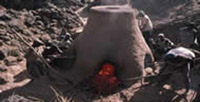
The University Cheikh Anta Diop (UCAD) of Dakar, and Institut Fondamental d'Afrique Noire Cheikh Anta Diop (IFAN-CAD), are pleased to announce the joint organization of the 13th PAA Congress (Panafrican Archaeological Association), and the 20th conference of the SAFA (Society of Africanist Archaeologists). This unprecedented opportunity to bring together members of these two associations dedicated to African Prehistory, in African soil, will certainly represent a turning point in the history of African Archaeology. This meeting will be held November 1-7, 2010 at the University Cheikh Anta Diop in Dakar, Senegal.
Themes: The local organizing committee proposes the following list of topics: Geology of the Quaternary; Hominids Evolution; Paleo-Environments and the peopling of Africa; Prehistoric Art in Africa; Transition from Stone to Metal; Food Production; Pastoralism; Megalithism in Africa; The African Iron Age; Complex Societies; Power, Society and State Formation; New Research on Urbanization and Cities in Africa; Historical Archaeology in Africa; Recomposed Past: The Archaeology of Identity in Africa; The Archaeology of Inequality: Gender, Class and Material Culture in Africa; Population Movements in African Past: Rethinking Migration; The Archaeology of African Diasporas; Heritage Management in Africa; Ethnoarchaeology in Africa: Beyond Analogy; Matter and Techniques; Experimental Archaeology; African Languages; Bioarchaeology; Archaeology and NTICs in Africa.
Participants are encouraged to propose additional topics and initiate thematic panels. It is desirable that teams working on specific or related issues lead sessions. Abstracts must be submitted either in French or English, and no later than April 30, 2010, at the following address: Panaf/Safa 2010, Laboratoire d'Archéologie, IFAN Cheikh Anta Diop, BP : 206 Dakar, Senegal, Tel: (+221) 33 825 98 90, panaf2010@ucad.sn ou panafsafa2010@yahoo.fr, http://panaf-safa2010.ucad.sn/.
[Return to table of contents]
Transnational Americas: Difference, Belonging, Identitarian Spaces

National borders and transnational relations have long been of central importance to the Americas. From Simón Bolívar's idea of a "gran patria" to Franklin Delano Roosevelt's "Good Neighbor Policy" and the work of the Organization of American States there is a long history of both theoretical and practical approaches to fostering transnational relationships and forms of cooperation. However, U.S. exceptionalism, imperialism and isolationist policies throughout the Western Hemisphere have often overshadowed inter-American relations and prevented approaches beyond dichotomies. In recent decades, massive migration movements, the transnational orientation of media along with the rise of New Media and the onset of the Information Age, an inter-American culture industry, the transnationalization of business and economy, trans-border consumer culture, cosmopolitan writers, artists and performers, governmental and non-governmental organizations, as well as transnational alliances like those of the New Indigenous Left have promoted the crossing of multiple borders in the Americas. Yet localist and regionalist tendencies, separatist movements, or gated communities uphold the primacy of smaller entities.
Transnational interconnections are simultaneously being intensified and hampered; they are a highly complex (and a highly politicized) matter. In order to explore the intricate dynamics of transnationalism in the Americas, Border and Transborder Studies, Area Studies, Postcolonial Studies, Popular Culture Studies, Urban Studies, Economics, Sociology, Anthropology, Political Science and numerous other academic disciplines have joined literary, cultural and media studies in initiating a lively and fruitful interdisciplinary dialogue on questions of difference, belonging, and identitarian spaces. Those are central to analyzing the impact of transnational developments on individual, communal, and national identities.
With a focus on past and present transnational developments in the Americas, the conference seeks to conceive of the New World beyond the scope of nation states—relationally and transnationally. Considering shared experiences and issues (e.g. indigenous heritage, Black Atlantic, condition of coloniality, history of inequalities, multicultural societies, transnational media and economies, glocal approaches etc.) it seems imperative to think in inter-American terms. With this goal in mind, the conference will address the following issues.
Academic Approaches: theories of national, cultural, regional, communal, individual identity and belonging; methodologies for analyzing transnationalism (e.g. the "reciprocal method"); identity politics (Bourdieu, Wacquant etc.); Inter-American Studies as comparative Social, Area, Cultural, Literary, and Media Studies; Ethnic Studies and ethnic identity in the context of transnationalism.
[Return to table of contents]20th Annual Conference of Archaeological Association of Nigeria
Archaeology, Creativity and Heritage Management In Nigeria

Call for papers. Conference subthemes include: (1) Archaeology -- Archaeology in Diaspora: Origin, Development, Norms and Practices; Stone Age Archaeology; The Domestication of Plants and Animals; The Age of Metals; Quaternary Geology and Paleo-environmental Studies; Settlement Patterns and Urbanization; Public Archaeology, Information Technology and Communication; Ethno-archaeological Studies. (2) Creativity -- Sociology of Knowledge; Indigenous Plants and Their Medicinal Values and Properties; Indigenous Medicare system; Indigenous Life-Stock Production and Management; Traditional Music and Dance (Ethno- Musicology); Iron-working Technology, Food-processing and Wine Tapping, Traditional Building Technology and Aesthetics (Mural Paintings); Indigenous Film Making; Traditional Communication. (3) Heritage Management -- Heritage Conservation and Management; Cultural/Heritage Management and Preservation; Tourism.
In view of the recognition that the above subthemes are not exhaustive of the broad theme of the conference, the organisers welcome papers in other related issues of Archaeology, Creativity and Heritage Management as well. Send abstracts of not more than 200 words to aanc2010nsukka@yahoo.com. Extended deadline for submission of abstracts and panel proposals: July 30, 2010. Submission of conference paper: Ocober 29, 2010. For further enquiries, do not hesitate to contact us: Archaeological Association of Nigeria, 2010, University of Nigeria, Nsukka – Nigeria, aanc2010nsukka@yahoo.com, mec_okonkwo@yahoo.com, www.tournija.blogspot.com.
[Return to table of contents]Linking Ghana and the Caribbean:
Legacies, Memories and Belongings
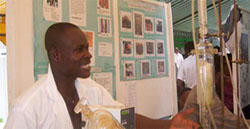
Papers are invited for presentation at a conference focusing broadly on the historical and contemporary connections between Ghana and the Caribbean. Using the Atlantic Slave trade as the progenitor of this link we seek papers which explore the memories of displacement and loss, the rituals of reconnection, and the claims for belonging on both sides of the Atlantic. The conference aims at bringing together scholars who are working on the archived as well as the lived and/or imagined connections between those Africans who were deported from the general area known as Ghana (the Gold Coast) and their descendants in the African Diasporas of the Caribbean. A major scholarly concern of this conference is the examination of the ways in which these connections have shaped ideas of historical belonging and contemporary citizenship. The conference is wide ranging in scope and invites the participation of those scholars who are working in a variety of disciplines which attempt to illuminate this historical and contemporary connection.
The following themes are suggested but are not exclusive: Establishing the Link: Histories of Departure and Arrival; Cultural Production and the African Diasporic Imagination; Spirits across the waters: Connections in the religious sphere; Reproducing History and Memory in diurnal ritual; The political strategies of Decolonization; Reconnecting: Historical and contemporary repatriations and reconnections.
The deadline for submission of abstracts and proposals together with a current CV is May 1, 2010. The conference is organized by the Harriet Tubman Institute for Research on the Global Migrations of African Peoples, York University, Canada through its MCRI Project ("Memory, Slavery and Citizenship") and the University of Cape Coast, Ghana. For further enquiries, contact: The Ghanaian-Caribbean Diasporas Conference Organizers at tubman@yorku.ca, or visit: http://www.yorku.ca/tubman or http://www.ucc.edu.gh.
[Return to table of contents]
Slavery and the University: Histories and Legacies
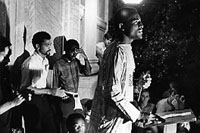
In recent years, an increasing number of scholars and students have explored the profound historical entanglements and legacies of slavery and the slave trade at institutions of higher learning. In some instances, critical reexaminations of slavery in the history of educational institutions have been sponsored or facilitated by senior administrations; in other cases, this kind of historical research and "memory work" has been pursued without official sanction or encouragement. This work has also inspired activism and change within universities and in the communities that surround them. This conference explores the full range of historical intersections between slavery and higher education, past and present, as well as the acknowledged and unacknowledged legacies of slavery and slave trades in the Academy.
We encourage paper and panel proposals on a wide range of topics, including: The economic entanglement of universities in the slave trade and in slavery; The roles of colleges and universities in providing theological, legal and political legitimation for chattel slavery and the Atlantic Slave Trade; Universities and the construction of racial knowledge in support of slavery and Jim Crow; The contributions of enslaved persons in the building and maintenance of colleges and universities; The experiences of enslaved persons and their descendants at institutions of higher learning; Universities as contributors to and inhibitors of abolitionism; Academic freedom, slavery and anti-slavery; How ideas about slavery and emancipation in educational institutions became templates for those institutions’ treatment of other groups (Native Americans, Native Hawaiians, other racial groups, women, imperial projects internationally); Remembering and forgetting slavery in the context of universities, including exhibitions, memorials, and commemorative ceremonies; The establishment of Historically Black Colleges and Universities as institutions addressing the aftermath of slavery and debates around the education of freedpeople; Memories and images of slavery at Historically Black Colleges and Universities; Strategies for engaging students and community members in documenting the history of slavery at institutions of higher learning; Literary and artistic engagements with slavery in university contexts; University Librarians and archivists and their experiences with this research; How these histories inhibited or inspired institutional change throughout the twentieth century and today.
Review of paper and panel proposals will begin April 26, 2010. For individual papers, please submit an abstract of no more than 250 words. For panels, submit an overall abstract of no more than 500 words and individual paper descriptions of no more than 250 words each, in addition to a cover page with paper titles, presenters, and their affiliations. Each applicant should also include a two-page c.v. with current email contact. Please submit materials via email to Dr. Melissa Sexton at msexton@emory.edu. Dr. Melissa Sexton, Transforming Community Project, Emory University, Atlanta, GA; email: msexton@emory.edu; visit the website at http://www.transform.emory.edu.
[Return to table of contents]Women and Gender in Colonial Contexts
 Université Paris -- 1 Panthéon Sorbonne (Cemaf et Centre d'Histoire du XIXe siècle), Ecole Normale Supérieure, Lyon (LARHRA), and the New York University (Paris).
Université Paris -- 1 Panthéon Sorbonne (Cemaf et Centre d'Histoire du XIXe siècle), Ecole Normale Supérieure, Lyon (LARHRA), and the New York University (Paris).For decades, colonizing was perceived and analysed as a masculine undertaking. This is probably why historians of colonisation (and decolonisation) -- who themselves were mostly men -- paid little attention to the study of women, of gender relations, or of how gender identities and sexualities were constructed in colonial contexts. Women were seen as negligible actors in colonial wars (both during or after the conquest), even though they were important actors within and victims of such conflicts. Moreover, as primary agents of the European "civilising mission," whose alleged principles were to "educate, cure, moralise and convert," women -- both colonisers and the colonized -- took part in the process of national assertion and of colonial domination. Last but not least, the colonial process created -- and was constantly reshaped by -- tensions as well as new forms of racial or social hierarchies and gender roles. Thus, the "colonial making of gender" proved to be a powerful vector of social transformation, both in metropoles and in colonies, as recent stimulating historical research has demonstrated.
The International conference on "Women and Gender in Colonial Contexts" seeks to assess the current state of historical research on this subject in a longue durée perspective, i.e., from the late 18th-early 19th centuries to the decolonisations of Asia, Africa, and the South Sea Islands (second half of the 20th century). Participants are welcome to present research focusing on specific colonial contexts, both in terms of time and space. At the same time, studies of women's experiences or of gender construction through a comparative perspective -- between colonies or Empires -- is strongly encouraged, as it will allow a better understanding of local versus global situations.
The Conference will also offer a significant opportunity to explore new sources, new approaches and new historiographical trends (notably through the combination of various epistemological tendencies such as micro-history, social history, subaltern studies, post-colonial studies or gender studies), in order to show the vitality of this field of research. The organisers encourage scholars to submit papers that investigate, within the framework drawn up by the Conference title, relevant aspects of the following: politics and policies, work, religion, education, health, family, mobilities, sexualities, body/bodies, war, slavery, violence, masculinities.
Proposals in French or English (300 words) should be sent by June 15, 2010, to: christelle.taraud@wanadoo.fr. Please attach a short CV stating your institutional affiliation.
Contexts and Backgrounds: policies and practices of national and cultural identity and diversity (incl. exceptionalism); belonging and citizenship; the Political Left in Latin America as opportunity or peril; activities and goals of social movements in favor of or opposed to transnationalism; human rights in the transnational Americas; migration; transnational flows of capital, goods, and labor; the economic and social impact of transnationalism; transnational crime, narco-traffic; changing urban spaces: ghettoization, gated communities, transborder metropolitan areas; identitarian spaces: diasporic communities, long-distance nationalism, enclaves; the Caribbean as a special case/laboratory of transnationalism; political, economic, social, cultural approaches to internal and national borders; obstacles to inter-American cooperation.
Negotiations: negotiations of national (and other) identities in literature, music, the arts, performance; the geopolitics of knowledge; cultural imperialism; brain drain; transnational media (policies), New Media; lifestyles, sexuality, and everyday practices in the context of transnationalism; transborder feminism; the continuing impact of coloniality; the postcolonial condition; processes of creolization, hybridization, mestizaje.
Abstracts for 30-minute papers (in English or in Spanish) or proposals for two-hour panels (usually with three papers per panel, possibly also with a respondent) should be sent to conference[at]interamericanstudies.net by April 30, 2010. Information at: http://www.interamericanstudies.net/?page_id=312.
[Return to table of contents]Book Review
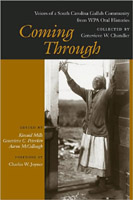
Genevieve W. Chandler, collector; Kincaid Mills, Genevieve C. Peterkin, and Aaron McCullough, editors. Coming Through: Voices of a South Carolina Gullah Community from WPA Oral Histories. Foreword by Charles W. Joyner. University of South Carolina Press, Columbia, 2008. xli + 391 pp., 14 photographs, 3 maps, references, 4 appendices, index. $29.95 (cloth), ISBN 978-1-57003-721-4.
Reviewed for the African Diaspora Archeology Newsletter by Christopher T. Espenshade, New South Associates
One of my earliest, large-scale, archaeological surveys on the South Carolina coast was the Arcadia tract, on the southern edge of the Waccamaw Neck. There were remnants of Gullah culture everywhere -- the rice fields and rice mill, slave quarters and post-bellum cabins, and a surprisingly high frequency of tar and charcoal kilns.
The Gullah themselves were still to be found. The distinctive dialect could be heard while waiting in line at Yum Young's Barbeque ("best barbeque in the Free World"). The local residents could be seen sweeping their yards, and you could still find doors and shutters painted purple to keep evil spirits out the house.
Unfortunately, there were significant gaps in the available literature. Charles Joyner's Home Upriver made some use of the WPA narratives from the area, and Jones-Jackson's When Roots Die touched on certain aspects of Gullah culture. Other areas boasted excellent volumes based on slave narratives (e.g., Drums and Shadows: Survival Studies Among the Georgia Coastal Negroes, and Weevils in the Wheat: Interviews with Virginia Ex-Slaves), but there was no such book for the Waccamaw Neck.
Twenty-two years later, students of culture, history, linguistics, folklore, and archaeology can now rejoice. Coming Through: Voices of a South Carolina Gullah Community from WPA Oral Histories provides a detailed and intimate look at Gullah culture on the Waccamaw Neck from slavery times through the Great Depression. It is a welcome addition to the regional literature, and it is recommended reading for members of the African Diaspora Archaeology Network.
Coming Through presents an edited collection of excerpts from oral history interviews sponsored by the Federal Writers Project on the Waccamaw Neck of South Carolina. Genevieve W. Chandler conducted the interviews among the ex-slaves and their descendents of this area. The editors -- Kincaid Mills, Genevieve C. Peterkin, and Aaron McCullough -- provide context for each interview. More importantly, the editors have selected material to provide a broad understanding of Gullah culture in these communities. Charles Joyner offers a brief Foreword, and the introduction details the Federal Writers Program and Chandler's activities in the program. The four appendices give a sense of the challenges experienced by white researchers seeking information from black informants, many of whom grew up enslaved. Fourteen, beautiful, black-and-white photographs taken by Bayard Wootten at the time of the interviews complement the 48 sets of verbatim interviews.
I had a few minor issues with this volume. Perhaps I was spoiled by Drums and Shadows, but I found this volume to be lacking in natural context. There is no introduction to the unique geography of the Waccamaw Neck. There was neither discussion nor photographs of the distinct environmental zones and resources of the Neck, nor was there any discussion of the unique cultural landscapes (e.g., the rice fields). Personally, I am well familiar with the area, but I wonder how well other readers can relate without an environmental introduction. The landscape of the Neck is integrally linked to why certain enslaved Africans and African Americans were brought to the area, and to why it is one of the enclaves of surviving Gullah culture. For those unfamiliar with the area, I recommend that they read Home Upriver before reading Coming Through.
This volume is not an easy read. Any oral history from a tightly knit community is bound to have some degree of repetitiveness, and I think that there are minor organizational shortcomings that exacerbate the repetitiveness. It often seems that we are told what is going to be said, and then we are provided two or more verbatim transcriptions of the actual conversation. My recommendation is to read this book over month or more, reading only a few informants at each sitting.
The verbatim transcriptions can also be a challenge. To those not speaking or hearing Gullah on a regular basis, some passages take a while to interpret. The Gullah practice of often using "he" as the universal pronoun certainly requires care from the reader. However, I think that Chandler was correct in recording these verbatim and the editors were correct in presenting the conversations as recorded. Oral history is not meant to be an easy read, and the language is such an important part of Gullah culture that the verbatim transcriptions are completely appropriate.
I fully appreciate the difficult choices made by the editors. They had to decide which accounts to include, and which to leave out. They had to predict and cater to the various audiences for this volume. At times I wondered if there was, perhaps, too much conversation about the details of day-to-day life, and not enough narrative addressing the past. As well, an archaeologist would certainly have culled different data from the narratives (I was particularly disappointed when the narrative of Reverend Albert Carolina was stopped, with a footnote stating that he continued to give a full account of his grandparents making and firing a load of hand-made pottery).
That said, there are nuggets of information that will be of specific value to the archaeologist (beyond developing a general feel for Gullah culture). For example, Lillie Knox tells us that the Gullah buried drowning victims north-south, rather than the typical east-west. She also provides excellent detail on many of the medicinal plants used by Gullah root doctors.
No single volume can reasonably be expected to present a comprehensive collection of the slave narratives from a given area. I judge Coming Through a great success in providing sufficient interviews to provide a real flavor of Gullah culture before and after Emancipation. The volume gives a valuable portrait of this distinctive culture, and the interviews stress individuals rather than cultural trait lists. The volume succeeds in bringing to life the Gullah of the Waccamaw Neck. Coming Through and other volumes of this genre also reminds us of the significant research potential residing in the yet to be published slave narratives. It is an interesting and educational volume, and it is will be a valuable addition to the bookshelf of all readers of the newsletter. Beyond providing particulars of Gullah culture, the volume reminds us of the individuals behind the archaeology.
[Return to table of contents]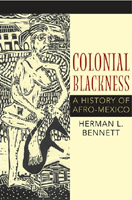
H-NET BOOK REVIEW
Published by H-AfrArts, http://www.h-net.org/~artsweb/ (Nov. 2009).
Herman L. Bennett. Colonial Blackness: A History of Afro-Mexico. Bloomington: Indiana University Press, 2009. xvi + 227 pp. $39.95 (cloth), ISBN 978-0-253-35338-2.
Reviewed for H-AfrArts by Matthew F. Rarey, Art History, University of Wisconsin-Madison, and Alyson Williams, Art History, University of Wisconsin
Rethinking Black and Christian Lives in New Spain
"What happens to our understanding of black identity," Herman L. Bennett asks, "when its foundational trope, the slave, is no longer conceived of as a stable subject?" (p. xiii). It is interesting, given the current and frequent emphasis on undermining the historical and cultural obsession with the act of manumission, that this question has so rarely been posed. This is the question that Bennett attempts to answer through an analysis of ecclesiastical church documents in New Spain between the sixteenth and eighteenth centuries. His response describes the vibrant social and private lives of both enslaved and free persons as it seeks to eliminate the distinction between "slave" and "free."
Bennett positions his study as the response of an intellectually frustrated scholar to what have been the central academic tropes of the Afro-Latin experience: the dependence on slavery as a major social category, the constant desire of blacks to attain upward social mobility, the lack of emphasis placed on Catholicism as an important social force among blacks, the need to characterize all black cultural practices as forms of resistance, and the constant reiteration of the lives of enslaved persons as socially dead, following Orlando Patterson's Slavery and Social Death: A Comparative Study (1982). Bennett succeeds in opening new spaces for further investigation and fruitful research through raising new and compelling questions regarding the construction and present understanding of the Afro-Mexican experience, challenging preconceived notions of what it meant to be black in New Spain.
Through his central argument and extensive use of primary sources, Bennett undermines long-standing scholarly conceptions of black lives, or lack thereof, as tied to slave plantation economies. Bennett instead relocates this history to metropolitan centers with rich social networks, a move that allows him to demonstrate that the lives and loves of black Mexicans are not constructed around resistance, but rather are rich and multifaceted independent human experiences. As he departs from the previously mentioned academic tropes, Bennett describes a world of mulattos, Africans, slaves, and Creoles (all interwoven and fluid social categories) in New Spain whose identities as slave or free are far less important than their lives as Christian subjects. It is only through articulations of Christian identity, Bennett argues, that Africans and their descendants create independent identities in New Spain. The dynamic/active social lives located inside of those Christian identities rely not on upward social mobility but on forming and maintaining elaborate family ties and maintaining individual personal identities. But as Bennett locates these personal identities inside his conception of "colonial blackness," he cautions the reader against presupposing that blackness exists as a homogenizing social category. Instead, being black in New Spain meant bringing "a perspective, a way of seeing, if you will, to the historical experience," which allowed blacks to define their own social lives as they interacted with other social groups (p. 214).
Despite Bennett's enormous theoretical scope, his source material has a difficult time carrying his argument. Bennett's study is entirely dependent on a detailed analysis of Catholic reformation marriage, concubinage, and cohabitation records between the sixteenth and eighteenth centuries, primarily in Mexico City, but also in Michoacán. If Bennett's only claims were that the Catholic Church sought to regulate Africans and their descendants as part of a Christian population and that blacks in Mexico were not socially dead, his sources would be very convincing. However, since Bennett is arguing for a deeper, more nuanced understanding of collective black identity, this source appears flat and one-dimensional. In his careful study of the ecclesiastical records, stories abound of Africans and Creoles whose kinship networks extend across the colonial Spanish caste system and across the geographic space of New Spain, and that were maintained in many cases as long as the individual was alive. In the face of these stories, Bennett can quickly and confidently undermine any claim that blacks in Mexico suffered a socially dead existence. Similarly, Bennett has no trouble convincing the reader that the Catholic Church, in its disciplining and regulation of black lives, gave little consideration to social category or ethnic identity when granting marriage dispensations or punishing misbehaving Christians. In these stories, free blacks, who have frequently been seen in other histories as posing problems to the hegemonic social order, never seem to pose problems to the Catholic inquisitors as social beings; it is only when they lose their commitment to Christian virtue that the church deems it necessary to regulate them.
Yet it is this focus on the ecclesiastical response to black lives that alerts the reader to a potential snag in Bennett's chain of argument, one that he seems unwilling to acknowledge in the text: the myopic and highly problematic nature of his sources. Ecclesiastical records may convincingly show when the church found it necessary to interfere in black lives, but they cannot demonstrate that it was solely the church through which black social lives were formed. They may show what punishments and regulations the church chose to impose on black lives, but they cannot say exactly what effect this discipline had on daily existence. Finally, and most important, they present a highly problematic construction of personal identity, one that Bennett seems to take at face value, but one that must have been filtered through black social lenses to manufacture useful identities for the inquisitors. While Bennett finds repeated invocations of blacks knowing each other since birth to be convincing proof that blacks maintained lifelong social relationships, we are given no hint of precisely how those social ties were forged, maintained, or even if they were true as presented to the panel. In other words, why did people choose to present themselves the way they did in front of the Inquisition council? Can we trust that people were always honest about how long or how well they had known one another? And, finally, how were these relationships maintained in the face of great distances and unreliable communication?
Colonial Blackness by no means lives up to its own subtitle: "A History of Afro-Mexico." It is rather a thoroughly researched, but at times argumentatively overstated, argument about the black experience in New Spain. Clearly, Bennett intends Colonial Blackness to be an extension of his previous study, Africans in Colonial Mexico: Absolutism, Christianity, and Afro-Creole Consciousness, 1570-1640 (2003). Colonial Blackness uses similar source material and presents a similar argument, but addresses some of the criticisms leveled at the first book, primarily through an expansion of its scope both geographically (outside of Mexico City) and temporally (beyond 1640). Colonial Blackness is the better developed of the two works, and anyone wishing to engage with Bennett's argument should begin with Colonial Blackness. The thesis of this book, to reorient our perspective in order to understand Afro-Mexicans, is fascinating and long overdue. In presenting questions that challenge the very foundation of traditional historical analysis of Afro-Mexicans, Bennett lays a strong foundation for future research that can only add to the richness and complexity of understanding that he introduces. The real strength of Colonial Blackness lies in its reframing of the discussion away from slavery and recognizing the diverse social and private lives that constructed an understanding of black identity. Unfortunately, its unquestioning reliance on its source material prevents Colonial Blackness from fully uniting its ambitious and welcome theoretical framework with appropriate evidence.
Copyright (c) 2009 by H-Net, all rights reserved. H-Net permits the redistribution and reprinting of this work for nonprofit, educational purposes.[Return to table of contents]
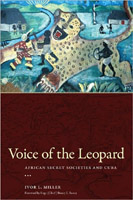
H-NET BOOK REVIEW
Published by H-AfrArts, http://www.h-net.org/~artsweb/ (Jan. 2010).
Ivor Miller. Voice of the Leopard: African Secret Societies and Cuba. Carribean Studies Series. Jackson: University Press of Mississippi, 2009. Illus., xx + 364 pp. $55.00 (cloth), ISBN 978-1-934110-83-6.
Reviewed for H-AfrArts by Jill Salmons
The Cross River Roots of the Cuban Abakua Society
In 1984, Robert Farris Thompson's pioneering book Flash of the Spirit: African and Afro-American Art and Philosophy examined the influence of Yoruba, Kongo, and Cross River cultures of Africa on the cultural traditions of black people throughout the diaspora. The insights that he provided inspired generations of scholars to study in greater depth the evidence of deep-seated belief systems and elements of culture that were brought from Africa to the New World through the infamous slave trade.
One of Thompson's pupils, Ivor Miller, has now produced a noteworthy study, concentrating specifically on one particular secret society, Ekpe, of the Cross River region of southeastern Nigeria and southwestern Cameroon; its transfiguration on Cuban soil into the Abakua society; and the ensuing effect of Abakua in shaping all aspects of the social, political, and metaphysical traditions of Cuban urban life. The book's title, Voice of the Leopard, refers to the belief in both locations that the mystic voice of the leopard is the most important symbol of political authority in autonomous communities. The subtitle, African Secret Societies and Cuba, is something of a misnomer, since the text deals with only one West African secret society. The book itself charts Miller's original research in Cuba and its verification by more recent research in the Cross River.
Miller went to Havana to study Yoruba influences in Cuba. However, introduced to a number of elderly men, descendants of Cross River slaves who were walking repositories of Abakua history and ritual, he recognized a unique opportunity. He spent the next few years interviewing these informants and substantiating their accounts by studying early ethnographies, police records, and colonial reports. An engaging aspect of Miller's introduction is his candid admission of the difficulties in piecing together information gleaned from different individuals, and marrying that information with available secondary sources to create an accurate description of the history and manifestation of Abakua as well as its role in Cuban life. The readers are introduced to key informants whose photographs are incorporated into the book. However, as Miller explains, the remarkably dense collection of material provided by such respected elders and the (recorded) responsorial chants performed by Abakua leaders took on poignant significance when, in 2004, he shared this knowledge with current members of the Ekpe society in the Cross River region.
I was present when Miller first presented Abakua chants to eminent Ekpe chiefs in the museum lecture room in Calabar, the port of embarkation for most Cross River slaves. Their response was at first bewilderment, and then a negative incredulity that this unknown American scholar knew chants that indicated a deep understanding of the core elements of their organization. However, as Miller described the history of Abakua, its prominence in contemporary Cuban life, and the burning desire of Cuban Abakua members to meet their Cross River "brothers," the atmosphere in the hall became electric. The chiefs recognized not only the living proof of the cultural transmission of Ekpe beliefs and manifestations, but also its ongoing relevance in Cuba. Subsequently, Miller was initiated into the Ekpe society in several Cross River communities, enabling him to undertake further research on direct links between lodges in the two locations.
After a foreword by Engineer Bassey Efiong Bassey, a prominent Ekpe titleholder, the book is divided into eight chapters. These are followed by 160 pages of detailed notes, appendices, and an extensive glossary. Every note has been scrupulously researched and every point backed up by personal communication or discussion of sources. The book also contains twenty-seven color plates and numerous black and white photographs and diagrams that help to substantiate Miller's narrative. It also contains detailed and fascinating explanations of the chants of the Abakua and Ekpe societies.
The first chapter describes the arrival of slaves from the Cross River region. Miller notes rivalries among Efik settlements on the Cross River that almost certainly led to the capture and transportation of leading members of communities. These men would have been key members in the dominant secret society of the area known as Ekpe or Mgbe. Such men would have involved themselves in the creation of the cabildos de nacion (nation groups) that were formed to maintain African cultural identities in Cuba, and they would also have participated in the establishment of the Ekpe society that became known as Abakua in Havana.
In Cuba, slaves captured from the Cross River region were generally known as Calabari, no matter what their original ethnic background, because Calabar was their port of embarkation. This term later became phonetically modified to Carabali. Carabali slaves as well as free blacks worked on the wharfs, and Carabali cabildos are documented in Havana as early as the 1750s. Miller suggests that Carabali cabildos recognized the political utility of Ekpe in resisting Spanish rule, and it was decided to share the institution with creoles (i.e., their children born in Cuba). Thus, the first Abakua lodge was created in 1836 for both Carabali and creole initiates. Abakua, based on an Ekpe model, was successful because it functioned to protect and liberate all Africans in Cuba. The creation of the original lodge and the ensuing formation of others is immortalized in chants.
Miller suggests that one precedent for the inclusive and multiethnic grouping that occurred in Cuba may have been the West African system of the Canoe house that combined the role of trading unit with government institution. He thinks that the creation of regional independent Abakua lodges was "particularly well suited for adaptation in a cosmopolitan heterogeneous environment where secrecy was required" (p. 73). He suggests that documentation from the eighteenth and nineteenth centuries indicates that various communities of African freed blacks in Cuba were interacting and reorganizing using Cross River models, and that the formation of Abakua lodges was part of a larger trend of expressing an emerging Cuban identity. Because many Carabali worked in ports, they came into contact with sailors who brought news from other parts of the diaspora. To escape detection from the Spanish authorities, Abakua adapted the Cross River form of gestural and written communication known as nsibidi.
In the chapter entitled "Planting of Abakua in Cuba," Miller describes how, after the setting up of the first lodge, a number of other lodges were established. They were often identified with particular barrios or urban areas in Havana and one other Cuban city, Matanzas. He cites the founding and identifying aspects of many of these lodges, often being able to show clear links with original Cross River ethnic groups through discussion of titles and lodge chants. Each lodge became "a social club of prestige for men; an informal school for historians, musicians and dancers; a vehicle for organising labor; as well as a place to hold funerals" (p. 89). Abakua also provided critical leadership in the organization of carnival groups that represented barrio identity. It further provided a code of moral conduct crucial to its own maintenance as an institution.
In spite of initial objections by blacks, white men were allowed to found a lodge in the 1850s. Acceptance of whites into the organization was, according to Miller, very important; "the rejection of skin-based hierarchies by the brotherhood became an important psychological tool for combating racism, for Abakua themselves and for the larger society" (p. 104). In particular, one Abakua leader, Andres Petit, was instrumental in breaking down cultural barriers and establishing rules and rites that are still practiced. Before long, lodges included members of African, European, and Asian descent, making Abakua "a foundational institution on the island, in the sense that [it] reflected the racial and ethnic makeup of the society half a century before the nation-state was inaugurated" (p. 118).
Miller writes of Abakuas being made illegal during the Wars of Independence. Many of its members were part of the resistance, with some arrested and sent into exile. It may be assumed they carried with them Abakua ideas and practices, though there is no evidence either from the penal colonies of Ceuta or Fernado Po, or from Cubans living in Florida, that Abakua lodges were established in any of these places. Harsh restrictions placed on the activities of the cabildos once authorized by the Spanish, meant that many did not survive. However, Abakua, officially nonexistent by this time, continued to flourish in a clandestine state.
Miller dedicates a complete chapter to the importance of music in all facets of Abakua practice. He demonstrates that in nearly every genre of Cuban popular music "from the nineteenth century danzon to the twenty first century timba one finds the presence of Abakua musicians and obvious signs of their influence" (p. 155). For example, he cites the Cuban popular use of claves, wooden sticks and the rhythms they produce, as being among Cuba's enduring contributions to world music. He claims that they originated from the pegs utilized by carpenters in shipbuilding, which, when drums were banned, were used to create a rhythm to accompany Abakua chants. He also argues convincingly that though Abakua chants were "secret," they had a strong influence on popular music, citing especially the 1920 recordings of Ignacio Pineiro. Calabar chiefs, hearing recordings of contemporary Cuban music, recognize the music as strongly influenced by Cross River Ekpe aesthetics.
In his conclusion, Miller justifiably points out the importance of such a comparative, transatlantic study in assessing African cultural influences on the Americas. Through his use of oral narratives and secondary sources relating to both Ekpe in the Cross River and Abakua in Cuba, Miller has pieced together a remarkable and fascinating story. Although his study will be of great interest to scholars and readers interested in learning more about West African culture and the influence of one specific secret society on Cuban history, his work is already having a profound effect on Ekpe and Abakua lodges in West Africa and Cuba. Miller may be justifiably proud for providing potent information to enhance the self awareness of "brotherhoods" with close cultural heritages living on both sides of the Atlantic.
Miller has been instrumental in arranging exchange visits between Cuba and Nigeria, and Cuban and Cross River Abakua/Ekpe brothers have performed together in Paris. As one Cross River chief commented recently: "Cuba has shown us that what we believed in is alive and applicable today to solve problems. We are ever so happy and grateful to the Cuban Abakua for bringing us back to our senses. Clearly the message is 'Hey, you did it, we have it, it worked for us, we don't see why it won't work for you.' So we are going to embrace this resurgence." Another chief reiterated this, stating: "At one time in my life, I did not associate myself with Mgbe even though I was a title-holder, but the advent of the coming of the Cubans into Calabar for the International Ekpe festival in 2004 awakened a renewal in my life. I asked myself: 'if the Cubans, who were taken from the soil of Africa to where they are today, could sustain Mgbe for over two hundred years, why should we in Calabar allow Mgbe to die?'" (http://afrocubaweb.com/abakwa/ekpeelders.htm).
Copyright (c) 2010 by H-Net, all rights reserved. H-Net permits the redistribution and reprinting of this work for nonprofit, educational purposes.